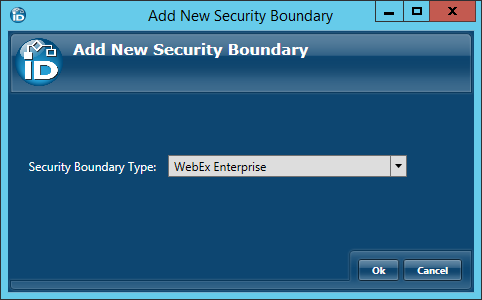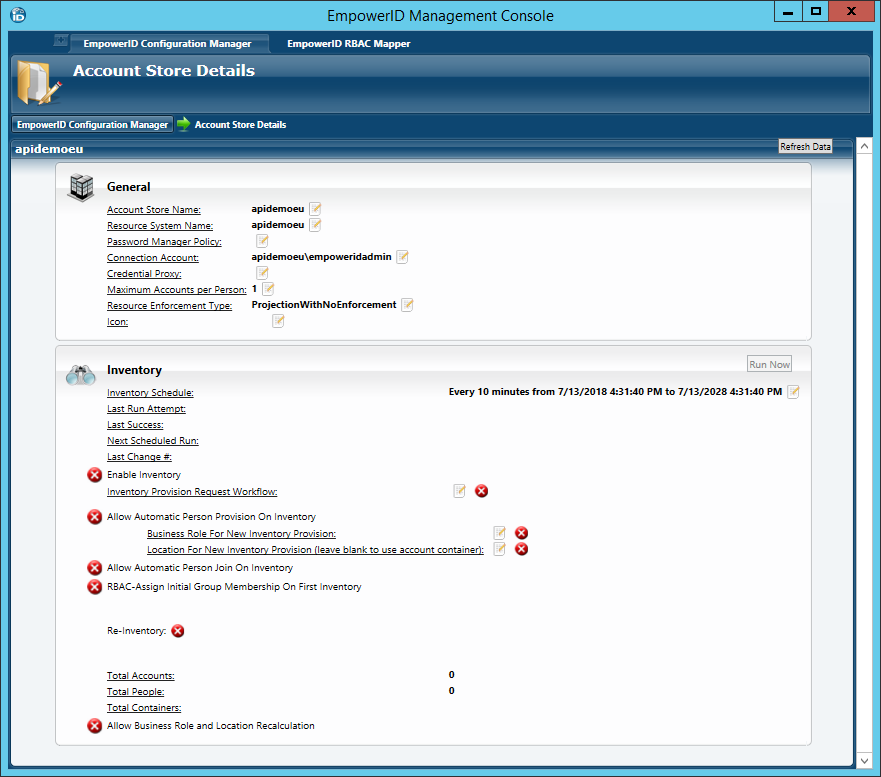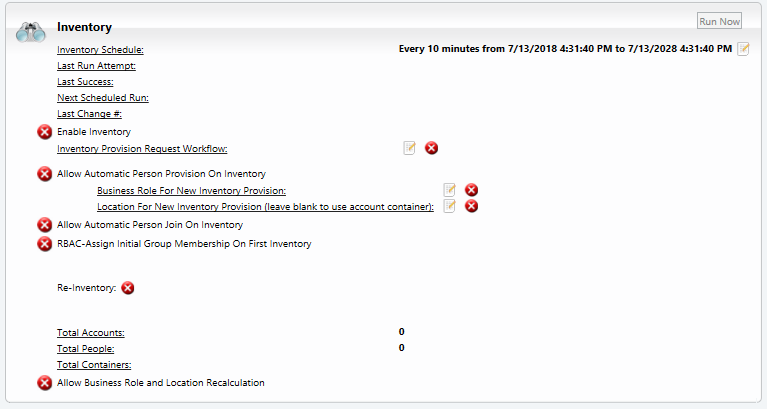The EmpowerID Webex Enterprise connector allows organizations to manage and synchronize Webex Enterprise user data. Once connected, you can manage this data from EmpowerID in the following ways:
EmpowerID provides Provisioning policies (resource entitlements) that allow you to automatically provision Webex Enterprise accounts for any person within your organization based on your policy requirements. For more information, see Provisioning Policies. |
Enable API integration for your Webex Enterprise site. Collect the following information from your Webex Enterprise account:
|
This topic demonstrates how to connect EmpowerID to Webex Enterprise and is divided into the following activities:
In Configuration Manager, select the Account Stores node and then click the Add New button above the grid.
In the Add New Security Boundary window that opens, select WebEx Enterprise from the Security Boundary drop-down and then click OK.



The Account Store Details screen contains two panes, the General pane and the Inventory pane, with settings that allow you to configure the Webex account store you just created. To view reference information about a particular pane, expand the drop-down for that pane.
From the General pane of the Account Store Details screen, optionally click the Edit button to the right of any settings that you want to change. For example, you can change the Account Store and Resource System names to something more user friendly, or select a custom Password Manager Policy that you have created.
In the Inventory pane of the Account Store Details screen for the account store, optionally toggle the icon to the right of the Allow Automatic Person Provision On Inventory setting from a red sphere to a green check box if you want EmpowerID to automatically create a linked EmpowerID Person object for each new, unique Webex user discovered during the inventory process.

Click the Edit button to the right of Business Role for New Inventory Provision and select an appropriate Business Role for each new Person provisioned during inventory.
Click OK to close the Business Role Selector.
Click the Edit button to the right of Location For New Inventory Provision and select an appropriate Location for each Person EmpowerID provisions during inventory.
Click OK to close the Location Selector.
The last step is to enable inventory. To do so, toggle the red sphere to the left of Enable Inventory so that it becomes a green check box.
After several minutes, refresh the account store data by pressing the Refresh Data button located a the top of the Account Store Details screen. You should see that EmpowerID has inventoried the users in your Webex Enterprise site and provisioned the requisite number of EmpowerID Persons for those accounts (if you selected the provisioning options discussed above).